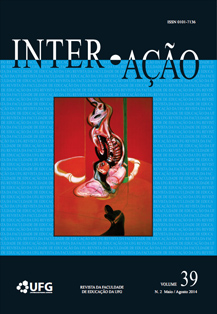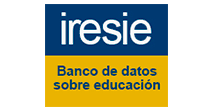A CULTURA DIGITAL, A SEMIFORMAÇÃO E O NOVO ELO PEDAGÓGICO
DOI:
https://doi.org/10.5216/ia.v39i2.31705Keywords:
Cultura Digital, Semiformação, Indústria Cultural, Elo PedagógicoAbstract
Atualmente, os indivíduos viciam-se por estímulos audiovisuais, os quais são propagados pelas telas onipresentes em todas as relações sociais. Desde elevadores até bares e restaurantes lotados, os quais transmitem as notícias mais atuais, nota-se a presença da tela que se universaliza nas relações de trabalho e de tempo livre, as quais não por acaso aproximam-se cada vez mais. Diante desse contexto histórico, torna-se imprescindível analisar o modo como as novas formas de produção e disseminação das informações redirecionam os vetores da relação professor-aluno. Seguindo essa linha de raciocínio, o principal objetivo desse artigo é analisar tais transformações da relação professor-aluno em tempos da chamada cultura digital.
Downloads
Downloads
Published
How to Cite
Issue
Section
License
Inter-Ação uses the Creative Commons Attribution 4.0 License for Open Access Journals (Open Archives Initiative - OAI) as the basis for the transfer of rights. Open access means making documents available on the Internet free of charge, so that users can read, download, copy, distribute, print, search, or link to the full text of documents, process them for indexing, use them as input data for software programs, or use them for any other lawful purpose, without financial, legal, or technical barriers.
Authors publishing in this journal agree to the following conditions:
1) Authors retain copyright and grant the journal the right of first publication, with the work simultaneously licensed under the Creative Commons Attribution License, which permits redistribution of the work with attribution and first publication in this journal.
2) Authors are permitted to enter into additional, separate agreements for non-exclusive distribution of the version of the work published in this journal (e.g., for publication in an institutional repository or as a book chapter), with attribution and first publication in this journal.
3) Authors are permitted and encouraged to publish and distribute their work online (e.g. in institutional repositories or on their home page) at any time before or during the editorial process, as this may generate productive changes as well as increase the impact and citation of the published work.















